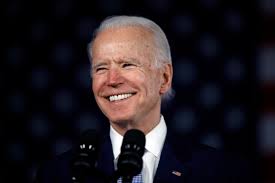The Critique
Interruptions, accusations, chaos: Trump trolled the debate stage
Donald Trump came to heckle. He came to interrupt and to pontificate and to flail his arms, batting away questions and facts in a chaotic fury. He was a boor and a troll, holding up his stubby mitts in an angry pantomime as he tried to halt the words coming from former vice president Joe Biden’s mouth. Trump seemed to believe that with a single rude hand gesture, one that he regularly uses to assert his dominance, he could hold back the truth so he could be free to spin and hype and vent.
It was an exhausting mess that spun beyond moderator Chris Wallace’s control and outside the bounds of anything that could reasonably be called a debate. It was a 90-minute display of a president’s testosterone-fueled, unmanaged rage and insecurity.
Biden came to debate, God bless him. Trump arrived seemingly hopped up on grievance and indignation, determined to just bellow his way through the evening without ever having to answer a question or speak with clarity and sincerity to the home audience. He raised issues with Biden about his son Hunter’s foreign business dealings and then refused to let his political rival answer. He yammered about fake news and Hillary Clinton. He talked over both Biden and Wallace. He talked so much that it became impossible to even understand what he was talking about. He talked ceaselessly, and yet he said very little. He talked so much it was as though he was trying to pummel the viewer into submission with his words.
“Will you shut up, man?” Biden said in a moment of dismay and exasperation. It was a plea that surely channeled the desires of a significant percentage of the viewing audience.
It was awful. It was miserable. And one wished desperately that there were commercials during the grotesque spectacle if only to give someone a chance to throw cold water on the president. But there were no breaks. It was an endless display, and it was frustrating to hear Wallace calling the president “sir” as he pleaded with him to adhere to the rules to which he had agreed. Sir. Trump did not deserve that nicety because he did not come to the debate bearing the mantle of the presidency. He came with the demeanor of a thug.
Surely no one thought the evening would be dignified and civil. That’s not the way in which Trump gins up ratings and attracts attention. Bellicosity is his rule. But Tuesday evening, Trump was exquisitely inexhaustible. He stepped to his lectern with a scowl and a jutting jaw. Biden walked out with an expression of geniality. Because of coronavirus precautions, the audience was limited to only about 80 people sitting socially distanced in wooden chairs.
It was a rare sight to see the entire Trump clan wearing masks as they entered the Samson Pavilion, which is owned by Case Western Reserve University and the Cleveland Clinic. They removed them upon sitting. Jill Biden wore a mask as well. She left hers on as she took her seat in the audience. The stage was set with the trappings of democracy. The carpet was blue with a ring of white stars. A large eagle with a banner reading “The Union and the Constitution Forever” was draped overhead.
In many ways, the setting was one that should have inspired a sense of calm and a more conversational tone. There was even a certain sobriety to the location, which at one point had temporarily been turned into a covid-19 hospital. There was no need to yell with such a small audience. There were no bursts of applause, laughter or cheers to fuel a candidate’s energy. One might have thought it was the perfect occasion for a reasonable back-and-forth.















